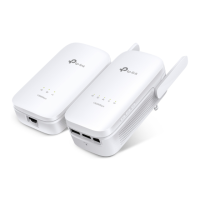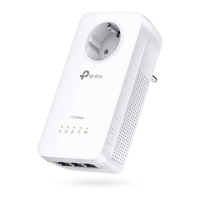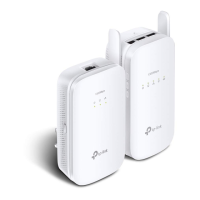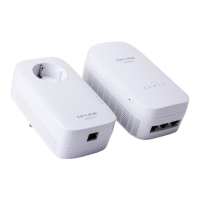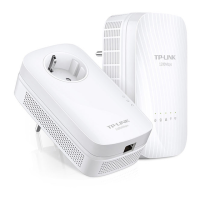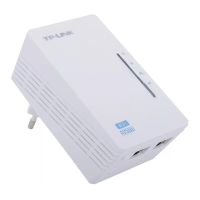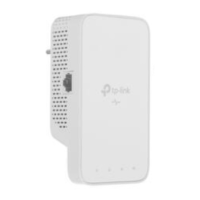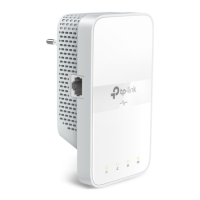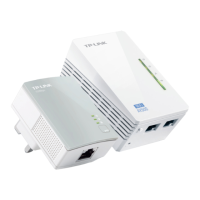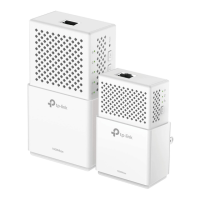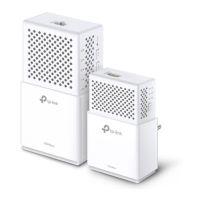Do you have a question about the TP-Link TL-WPA8631P and is the answer not in the manual?
Explains symbols and formatting used in the guide.
Overview of the powerline Wi-Fi extender's capabilities.
Details the physical appearance of the extender.
Guide for setting up a new secure Wi-Fi network using the powerline kit.
Instructions for extending an existing wireless network with a new extender.
Accessing the device's web management interface.
Adding new devices and changing the powerline network name.
Synchronizing Wi-Fi settings across extenders.
Copying Wi-Fi settings from the router to the extender.
Customizing wireless network name, password, and advanced settings.
Scheduling when the device LEDs turn on or off.
Scheduling the Wi-Fi network's on/off times.
Setting internet access time limits for specific devices.
Creating and configuring a separate network for guests.
Blocking or allowing devices based on their MAC address.
Managing LAN settings, system time, firmware, backup/restore, and logs.
Explains the concept and benefits of a unified Wi-Fi network.
Step-by-step guide to creating a OneMesh network.
Explains symbols and formatting used in the guide.
Overview of the powerline Wi-Fi extender's capabilities.
Details the physical appearance of the extender.
Guide for setting up a new secure Wi-Fi network using the powerline kit.
Instructions for extending an existing wireless network with a new extender.
Accessing the device's web management interface.
Adding new devices and changing the powerline network name.
Synchronizing Wi-Fi settings across extenders.
Copying Wi-Fi settings from the router to the extender.
Customizing wireless network name, password, and advanced settings.
Scheduling when the device LEDs turn on or off.
Scheduling the Wi-Fi network's on/off times.
Setting internet access time limits for specific devices.
Creating and configuring a separate network for guests.
Blocking or allowing devices based on their MAC address.
Managing LAN settings, system time, firmware, backup/restore, and logs.
Explains the concept and benefits of a unified Wi-Fi network.
Step-by-step guide to creating a OneMesh network.
| Universal Plug and Play (UPnP) | Yes |
|---|---|
| Networking standards | IEEE 1901, IEEE 802.3, IEEE 802.3ab, IEEE 802.3u |
| Ethernet LAN data rates | 10, 100, 1000 Mbit/s |
| Ethernet interface type | Gigabit Ethernet |
| DSL WAN | - |
| SIM card slot | No |
| Modulation | OFDM |
| Wi-Fi band | Dual-band (2.4 GHz / 5 GHz) |
| Wi-Fi standards | 802.11a, 802.11b, 802.11g, Wi-Fi 4 (802.11n), Wi-Fi 5 (802.11ac) |
| Top Wi-Fi standard | Wi-Fi 5 (802.11ac) |
| WLAN data transfer rate (max) | 1300 Mbit/s |
| Power supply | 13 W |
| Power source type | AC |
| Power consumption (typical) | 11 W |
| Operating temperature (T-T) | 0 - 40 °C |
| Storage relative humidity (H-H) | 5 - 90 % |
| Operating relative humidity (H-H) | 10 - 90 % |
| Ethernet LAN (RJ-45) ports | 3 |
| Antenna type | Internal |
| Certification | CE, RoHS |
| Product color | White |
| LED indicators | Activity, LAN, Power, WLAN |
| Security algorithms | 128-bit AES |
| Power plug | Type G |
| Maximum operating distance | 300 m |
| WLAN data transfer rates supported | 300, 867 Mbit/s |
| Windows operating systems supported | Windows 10, Windows 7, Windows 8, Windows 8.1 |
| Package type | Box |
| Cables included | LAN (RJ-45) |
| Quantity per pack | 1 pc(s) |
| Harmonized System (HS) code | 85171800 |
| Depth | 42 mm |
|---|---|
| Width | 75 mm |
| Height | 152 mm |
